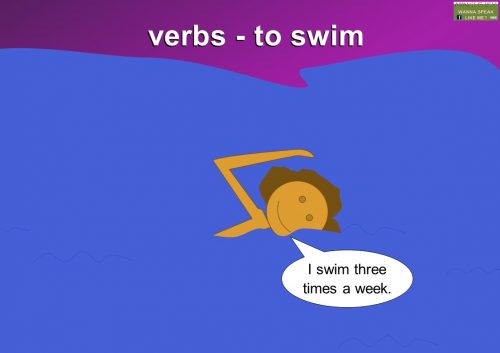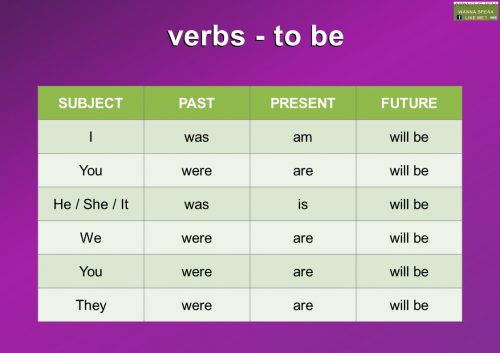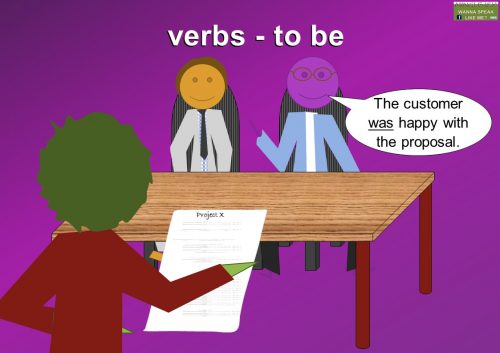A verb is one of the parts of speech (one of the easier ones to spot in my opinion). The easiest way to describe verbs is by calling them ‘a doing word’. It involves an action. This action can be physical, mental, or state of being (overall physical condition of a person). For example:
- Physical actions include: to eat, to walk, to swim, to play
- Mental actions include: to consider, to remember, to think, to wonder
- State of being include: to be (in all tenses), to appear, to exist
examples of verbs in use
Here are a few examples of common verbs in action.
verb ‘to be’
One of the most frequently used verbs is the verb ‘to be’. It’s not an action verb but a state of being. The function of ‘to be’ is to describe a subject. If you learn one thing today, let it be the following table. It’s the foundation for basic speech and writing. Once you’ve cracked it, you’re well on your way.
I’ve thrown in a few examples for you too.
types of verbs
Once you’ve learnt the verb ‘to be’, It’s time to move on to the other types of verbs. We know that verbs can be categorised as physical, mental, or state of being…
Now, it’s time to categorise them further…
There are quite a few of them for you to master. Make your way through the headings below and get learning.













